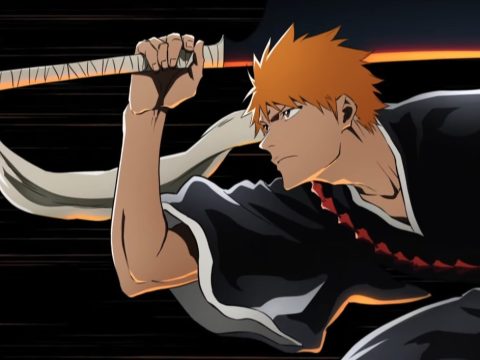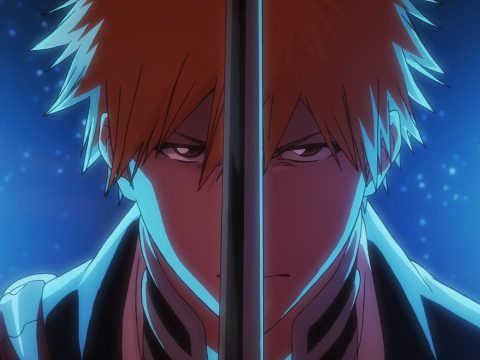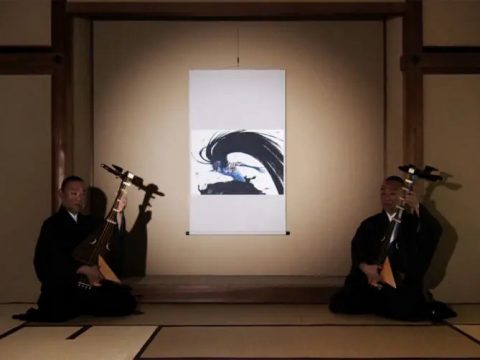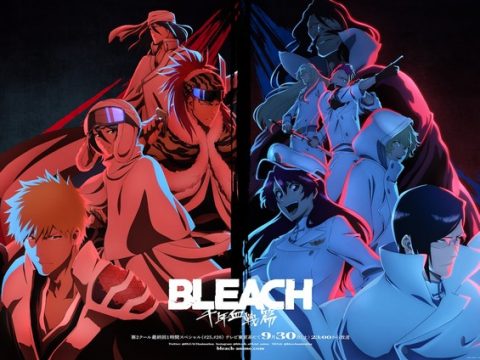
In the second season of Bleach, which encompasses episodes 21-41 of the ongoing series, Ichigo Kurosaki and his band of power-loaded misfits are tasked with the impossible: breaking into the impenetrable soul society known as Seireitei. They’re not just a bunch of haphazardly cobbled mercenaries on an infiltration mission, though, they’re here to rescue Rukia, who is imprisoned and set for execution in the very near future.
Rukia’s plight makes this a very Princess in the Castle story arc, as she sighs wistfully, looking out the tower window and waiting for her knight (or plumber) to arrive. Getting there is no easy task for Ichigo and the others, at that. Their first challenge is getting past the gate, guarded menacingly by an actual giant, and even when they’re in they have squads of the most powerful members of this society hot on their tails. Everything they’ve trained for up to this point is exercised to some degree, and even that may not be enough to save the girl who set these events into motion in the first place.
 For my money, this set of episodes is where Bleach really comes into its own. While the first season served as a solid introduction to all of the key players, pitting them against a common menace whose black and white evil is fairly undeniable, season two is wholly a reluctant war against the soul reapers themselves. Battles are much more substantial thanks to this, because the relatively faceless foes from before are now like-minded adversaries with storied pasts and fleshed-out relationships.
For my money, this set of episodes is where Bleach really comes into its own. While the first season served as a solid introduction to all of the key players, pitting them against a common menace whose black and white evil is fairly undeniable, season two is wholly a reluctant war against the soul reapers themselves. Battles are much more substantial thanks to this, because the relatively faceless foes from before are now like-minded adversaries with storied pasts and fleshed-out relationships.
Take Renji Abarai, for instance. When we first run into him in season one, he battles Ichigo and seems like an all around Bad Dude. However, despite their vicious rematch in the second season, we get an entire episode of backstory detailing his connection to Rukia—the slums they grew up in and the hardships they overcame together—and his true character has emerged by the time their blades stop swinging. Tite Kubo has done an admirable job in making sure that Bleach is more than a neverending volley of escalating altercations, and this quality shines much brighter in these episodes.
That’s not to say that Bleach has gone all Hallmark on us, though. There’s plenty of hard-edged bloodshed here as both foe and friend alike hemorrhage crimson like overstuffed jelly donuts. The amount of blood in this series would make the red cross’s reserves look like a drop in the bucket, especially for a shonen show. They mix up the scenarios often enough to keep it interesting, volleying back and forth between Ichigo, Chad, Uryu, Orihime and Ganju, all of whom are stuck in their own individual skirmishes within the walls of Seireitei.
 Speaking of Ganju, I don’t normally go ga-ga for Japanese voice talent, as my handle on the language is anything but competent, but Wataru Takagi is undeniably The Man. His is all too recognizable as the voice behind such classic characters as Eikichi Onizuka (GTO) and Masaru Aoki (Hajime no Ippo), among many others, so my ears lit up once he was introduced as Ichigo’s reluctant and combative new teammate.
Speaking of Ganju, I don’t normally go ga-ga for Japanese voice talent, as my handle on the language is anything but competent, but Wataru Takagi is undeniably The Man. His is all too recognizable as the voice behind such classic characters as Eikichi Onizuka (GTO) and Masaru Aoki (Hajime no Ippo), among many others, so my ears lit up once he was introduced as Ichigo’s reluctant and combative new teammate.
If there’s anything that does get a little tiresome in the series, it’s the constant string of unfathomable luck that trails behind Ichigo throughout. While it’s understandable that there wouldn’t be a show without him, some things work out just a little too conveniently for the carrot-top protagonist. He can fall to his enemy a million times, bleed out that many pints, and still hold out for the ever present miracle we all know is coming. It may make future deaths seem a little heavier, but at this juncture it just reeks of invincibility. To be fair, this is an issue that’s inherent to the genre itself, and it’s about as expected as the long previous-episode recaps that, thankfully, aren’t as drawn out as those in Naruto.
 Bleach is enjoyable because it’s never one thing for too long a period. If it’s deadly serious for a stretch, expect some levity shortly thereafter, and the absurd is mixed with the plausible liberally. Once upon a time, I was pretty skeptical of Bleach‘s appeal, even as a shonen fan. I think these episodes are the make or break point, though, so if you’ve made it this far and still aren’t hooked, this might be your last stop. Everyone else, sit back and enjoy the ride, because season two is full of action, humor, and characters that are intriguing enough to lure the viewer on to the next collection, and that’s something I’m very much looking forward to at the moment.
Bleach is enjoyable because it’s never one thing for too long a period. If it’s deadly serious for a stretch, expect some levity shortly thereafter, and the absurd is mixed with the plausible liberally. Once upon a time, I was pretty skeptical of Bleach‘s appeal, even as a shonen fan. I think these episodes are the make or break point, though, so if you’ve made it this far and still aren’t hooked, this might be your last stop. Everyone else, sit back and enjoy the ride, because season two is full of action, humor, and characters that are intriguing enough to lure the viewer on to the next collection, and that’s something I’m very much looking forward to at the moment.
Studio/Company: Viz Media
Available: Now
Rating: T
Images © Tite Kubo / Shueisha, TV TOKYO, dentsu, Pierrot








